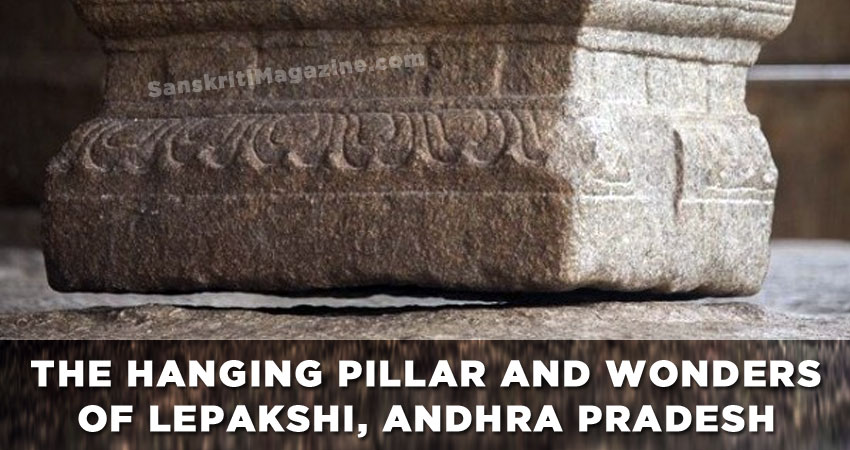Situated at a distance of 112 km from Ahmedabad in the north direction, Vadnagar is a historic town known for its legends, battles, temples, forts, gates and large water bodies.
In ancient time Vadnagar was called Chamatkarpur. According to a legend, there was a king named Chamatkar who ruled Anarthdesh, the ancient Vadnagar. The legend tells us that he was suffering from leprosy due to a curse from a she-deer. With the advice of sages, the king did penance and took bath in the famous ‘Sankh Tirth’ situated in Vadnagar, and his leprosy was cured. Thereafter he established the town name Chamatkarpur.
Vadnagar was also known as Anarthapur, the capital of the kingdom of Anartha. Anartha is referred to in Mahabharata. It says: warriors from Anartha participated in Kurukshetra war on the side of both the Pandavas and the Karuavas.
Post Mahabharata war, Anarthapura was no more remained the capital city and seat of power. In its west a new and powerful city called Vallabhi became the capital of Gujarat. But Anarthapura continued to be a prosperous trading city. It remained as a cultural centre and patronized artists, sculptors, musicians, dancers and actors. The city was joyful and happy. By 2nd century AD, it came to be known as the Ananadapura – ‘the City of Joy’. It attracted monks and followers of Buddhism and Jainism. The city supported hundreds of Buddhist monks. Recent archaeological discoveries of a finely carved Buddha head from a farmland suggest the presence of Buddhism.
The city was visited by the Chinese traveller Huen T Sang twice. He wrote:
‘This country is about 2000li in circuit, the capital about 20li. The population is dense; the establishments rich. There is no chief ruler, but it is an appendage of Malava. There are some ten sangharamas with less than 1000 priests; they study the Little Vehicle of Sammatiya School. There are several tens of Deva temples, and sectaries of different kinds frequent them. Going west from Valabhi 500li or so, we come to the country of ‘Su-la-Cha’.
The city of Anandapura became very old and at some stage people started calling it Vruddhanagar. However, the city maintained its importance as a place of art, literature, music, drama, architecture, sculpture, learning and trade.
The city was conquered by the Malvas and ruined its prosperity. However, under the rule of Solankis (942 – 1244) the Malvas were driven out from Vadnagar. To strengthen its security the Solanki ruler Kumarpal rebuilt the fort around it in 1152 AD. The city reached to its zenith during the Solanki rule. Great many temples, palaces, residences, bazaars, wells, vavs, kunds, roads were built in and around the city. Yet the most remarkable among the Solanki remains are the twin torans, which were built in the 10th century as victory symbols over the Malvas.
The entire city had a protective fort with six gates built by the Solanki rulers.
Vadnagar has always been a city of temples. However, the most important is the temple of Hatkeshwar, a 15th century monument and the shrine of the Nagar Brahmins.
After about four centuries of peace Vadnagar was attacked, looted, burnt by the army of Delhi Sultanate. Yet, during the rule of Gujarat Sultanate, Vadnagar bounced back its prosperity. But it was short lived. In 1726 Marathas sacked it and it was practically burnt down into ashes. Many of its citizens fled. It was again looted in 1735 by Khandji Holker and in 1737 by Daqmaji Gaekwad. The city was left to ruin.
Vadnagar has been strongly associated with Nagar Brahmins, a caste of high order Brahmins known for their novelty and knowledge. Though Vadnagar has been the original home of Nagar Brahmins yet the city could never sustain them. Vadnagar was invaded several times and Nagar had to flee and seek refuge at various places. It is believed that it is because of Lord Hatkeshwar the Nagar families have never been able to permanently settle at Vadnagar.
In 1669 AD, Vadnagar was invaded by the Maharana of Mewar. In the Maratha regime Vadnagar was repeatedly invaded forcing Nagars to move out of the city. In 1693, Aurangzeb ordered the destruction of the Hatkeshwar temple at Vadnagar. Shri Govindramji Tikaramji, a great poet of Shajapur has written ‘fed up the atrocities of the Muslim kingdom, our Nagar ancestors moved to Malva in 1400 bullock carts.’
Legend of Tana and Riri
AKBAR, the great Moghul Emperor was a patron of art. His chief musician Tansen was an accomplished singer of various ragas. On hearing that Tansen had the gift of getting lamps lit up by singing raga Deepak, the Emperor decided to test him. However, Tansen pleaded not to make him sing Deepak because he knew the dire consequences. But the Emperor insisted. Tansen was compelled to sing the raga Deepak.
Indeed, raga Deepak not only light up all the lamps of the palace, but also at the same time Tansen too experienced intense burning within his own body. The only remedy for cooling his burning was that somebody else truly sang raga Malhar. Tansen roamed around the country and atlast came to know that Vadnagar nourished arts and culture and he might find someone knowing Malhar truly there.
He came to Vadnagar by nightfall and took rest on the bank of Lake Sharmishtha. In the early morning women began coming to the lake to fetch water. Tansen was watching them. Among them were two sisters named Tana and Riri. They filled their pitchers with water but soon Tana emptied her pitcher. She did this several times. Tansen was watching this. Riri asked Tana. “Sister, how long will you do like this?” Tana replied. “As long as we do not hear the tunes of Malhar.” Ultimately, Tana was satisfied when she succeeded in feeling the pitcher in such a way that the water flowing in it emitted correct Malhar sounds.
Tansen, who was listening to their conversation, was greatly surprised. He knew that his search for someone knowing true Malhar had ended. He approached the two sisters and asked. “I am a Brahmin. I know Deepak and I sang it at the insistence of the Emperor. Now my whole body is on fire. I do not know Malhar. Only you can save me. Otherwise, I will die of burning within my body. Please sing Malhar so that the fire within me would be extinguished and my body will cool down. Please help me.”
Tana and Riri took pity on the person because of his suffering. They told him to wait till they consulted the elders. The elders decided that the sisters would sing Malhar to help the Brahmin.
Tana and Riri began singing Malhar. The sky was slowly filled with black clouds of rain. Soon it started raining. By the time they finished their singing, it was raining torrential. Tansen was completely drenched in the cool rain water. His burning vanished like magic.
By now Tana, the elder sister, knew that the man pretending to be a Brahmin was none other than the famous singer Tansen. He only could sing true Deepak. And in her euphoria at the demonstration of her singing power of Malhar, she said. “You must be satisfied, Mian Tansen”.
Now that his true identity was known, Tansen begged everybody present to forgive him and spare his life. People of Vadnagar understood his plight. But they let him go only after he promised that he would never tell anybody about Tana and Riri.
Tansen returned to Delhi. Akbar was greatly surprised to see him cured of his burning. He asked him. “Tansen, you said there was no cure for your burning. Now you are cured. How did it happen? Who cured it?” Tansen didn’t want to give the full answer so, he said. “O, Great Akbar, I reached a land where I heard true Malhar and my burning stopped.” Akbar was not satisfied with his answer. He sternly asked. “Who sang true Malhar and where?”
Tansen was afraid. If he gave away the secret, his promise would be broken. But he knew that if he didn’t tell the truth, he would be a victim of Akbar’s wrath. “Who and where?” Akbar thundered. Tansen feared for his life. He narrated everything that had happened at Vadnagar. He praised their singing power and also, their beauty and goodness.
Unfortunately, two princes of Akbar’s many Begums were secretly listening to their conversation. They were greatly fascinated by the story. They hatched a plan to kidnap Tana and Riri for themselves. Soon, they secretly left for Vadnagar on horseback all alone.
They arrived at Vadnagar by nightfall. The gates of the fort were closed so, they decided to spend the night outside. They chose a spot under a Banyan tree on the shore of Lake Sharmishtha. They thought that in the morning they would be able to see Tana and Riri as Tasnsen had narrated.
When dawn broke over Lake Sharmishtha they woke up and waited. Soon the morning sun rose on its eastern shore. With shimmering golden waters the Lake looked very beautiful. Slowly women began arriving to the shore to fetch water as was their daily routine.
Soon, Tana and Riri too came talking and laughing with each another. The two princes had no difficulty in making out as to who they were. Even from a distance they looked quite distinct from other women. The two sisters began filling their pitchers with water by filtering it with a square piece of fine cloth the size of a large scarf.
When the pitchers were filled they took off the cloth and shook it off in the air for drying. The princes took it as a signal for calling them. Eagerly they approached the two sisters exclaiming loudly, “Allah be praised, how beautiful they are!” But all the women there were taken aback at the sight of two unknown men and started shouting for help. In no time many town people rushed to the spot and caught the princes. In their frenzy, they killed both the princes. Their horses too were killed. All the four of them were buried on the shore of the lake.
At the other end, when Akbar came to know about the absence of the two princes, he ordered his soldiers to find out them. After some time it was known that they had gone to Vadnagar and killed by the town people there. Now, Akbar was furious. He ordered his army to march to Vadnagar, punish the town people, and bring Tana and Riri to Delhi.
In a few days the army reached Vadnagar. It massacred all the men of the city, burnt it, and captured Tana and Riri. The soldiers put the two sisters in a palquin and began their march back to Delhi. But the two sisters were determined to die rather than go to Delhi. When their palquin reached near the Mahakaleshvar temple, just outside the city gates, they sucked the diamonds they were wearing on their rings and died of the poison.
Their bodies were cremated there only. Later on two small temple-like structures were built there as their memorial. The people of the ancient city of Vadnagar never forgot Tana and Riri.
~ Sahil Ahuja











